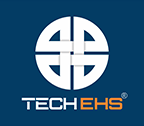
Table of Contents
Introduction
Predictive analytics in workplace safety, in a nutshell, transforms how risks are managed. It involves predicting future trends based on past data analytics. Once data is gathered from observations, reports, and other reliable sources, gaps and probable problem areas are highlighted, which allows us to predict outcomes and strategize preventive actions. Predictive analytics in workplace safety can transform how risks are managed by using insights to mitigate future hazards.
As with most of us, you are often advised to get regular health check-ups. Even your car or bike goes through regular service and maintenance checks. This process detects anything unusual or wear and tear and takes care of it before it leads to adversities.
The data accumulated from these regular services and check-ups defines a trend. This trend helps initiate and implement preventive measures, which basically reduce the intensity or eliminate a possible unfavorable situation.
Now, if we mirror this concept in an organization, the results could be unimaginably beneficial.
Workplace hazards can be
The impact of these hazards is multifaceted. Therefore, they must be taken care of right from the beginning. The best way to do that is to identify trends and take a proactive approach to preventing accidents before they happen.
Predictive analysis and workplace safety are great associations. Predictive analytics in workplace safety can help workers feel safe and can significantly improve workplace safety.
Predictive analytics in workplace safety can help workers feel safe and significantly improve workplace safety.
So, let us take a closer look and understand predictive analysis, what it really is, and how it contributes to workplace safety.
What is Predictive Analytics?
Predictive analytics in workplace safety is predicting future trends based on past data analytics. Once data is gathered from observations, reports, and other reliable sources, gaps and probable problem areas are highlighted, which allows us to predict outcomes and strategize preventive actions.
This statistical technique involves machine learning algorithms and data mining for predictions that are near perfection. In the context of workplace safety, predictive analysis can identify patterns and trends that indicate potential hazards, allowing organizations to take proactive measures to prevent accidents before they occur.
Also, a workplace safety analytics dashboard gives precise information as it receives comprehensive data for analysis. These dashboards can be personalized and accessed from all screen sizes. Therefore, it escalates processes and a proactive approach is incorporated automatically into the system.
Predictive analytics in workplace safety offers the highest accuracy and is incredibly reliable for organizations from all sectors. It has worked miracles in the medical sector and revolutionized the construction industry, which is why it will surely be an incredible addition in the HSE data analytics aspect as well.
Try our HSE data analytics tools to drive proactive and site-specific safety planning.
So let us briefly see predictive safety analytics from the HSE perspective.
Incident & Accident Prediction
When predictive technology receives data about previous accidents and incidents in a workplace, it analyses them to acquire the details of “how and why” they happened and thus predict safety incidents. It helps organizations understand the root causes and take remedial action immediately. Moreover, predictive safety analytics also identifies the trends of occurrences of these incidents or near misses, highlights the gaps & after studying these trends, analyses similar situations, which helps predict the outcome.
For example, if a high number of slips are reported in a specific area, the technology analyses this data and displays the area name where frequent falls have occurred. It also gives the reasons workers gave for slipping there. This helps the safety manager take preventive measures for these recurring incidents, thus leading to fewer or no injuries.
Prevent recurring incidents using safety data analysis for actionable insights.
Site-Specific Analysis
Not every task is the same. The scaffolding department has unique challenges, and so does the department managing heavy vehicles and equipment. Predictive analytics in workplace safety defines these site-specific challenges, resulting in individual safety plans for each. Additionally, predictive analytics is time—and cost-effective as it can devise site-specific safety plans.
These site-specific analyses help address unique challenges and prevent hazards. Every plant, site, and equipment has its prediction, making it easy to take a proactive approach with HSE data analytics.
Everything is “Real”
Predictive analytics for EHS sets an excellent premise for safety. From churning results from actual data to giving out information in real time. Therefore, not just past findings but also real-time happenings help to constitute the predictions.
For example, there are sensors for overloading cranes. These sensors are linked directly to the system, so whenever the crane gets overloaded, the sensors send data to the system and update it. Immediately, the crane is stopped, and proper actions are taken, thus averting accidents.
The records indicate a pattern that predicts safety incidents and answers why, when, how, and whom for safety data analysis.
Key Aspects of Predictive Analysis in Workplace Safety
So, how does predictive analysis work?
Data Collection
It systematically gathers relevant data from diverse sources within the workplace. This data provides the raw material necessary for subsequent analysis and model-building.
For example, records of routine maintenance and repairs of machinery and equipment. These logs help identify equipment failure patterns that could lead to potential hazards.
Data Processing and Analysis
Once data is collected, it is processed and analyzed to extract meaningful insights. For example, it helps uncover relationships between variables, such as the frequency of equipment failures and specific operational conditions.
Predictive Modeling
Predictive analytics in workplace safety uses historical data to predict future events. It actually predicts what, how, and when things will occur. For example, it predicts the machinery due for maintenance once it reaches the required working hours or if any malfunction can occur due to erroneous work.
Real-Time Monitoring
Real-time monitoring detects workplace safety analytics and proactively prevents workplace hazards. From continuous data streaming to sending alerts, the proactive intervention of data analytics tools ensures escalated safety through HSE data analytics.
Transform safety management with real-time predictive monitoring tailored for your worksite.
Thus, Paving the Way for a Safe Future
Incorporating analytics tools such as Power BI, corporate dashboards and more can ease your EHS efforts. Knowing the future and analysing organizational plans according to it, helps to achieve goals quicker.
When predictive analytics in workplace safety technology is used, everyone can access immediate and accurate information. Predictive-based safety makes managing reports and information much more accessible, leaving no room for errors. Also, this information helps to design future safety measures based on past and present analysis. Solutions can be created based on the severity and frequency of the occurrences using safety data analysis.
Basically, predictive analytics makes you and your organization effectively prepared for the future.
Explore how predictive analytics in workplace safety can help you create safer environments. Moreover, discover real-time insights through safety data analysis for smarter incident prevention.



